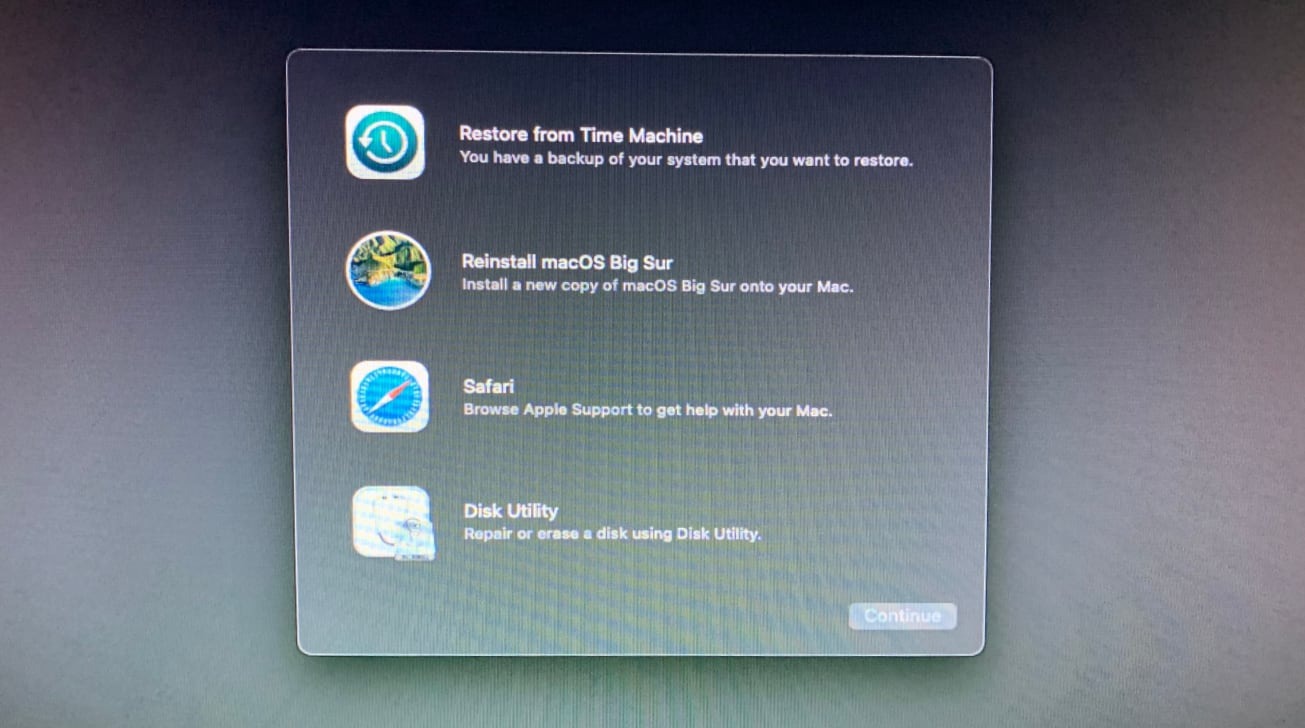
- Boot imac operating system how to#
- Boot imac operating system for mac#
- Boot imac operating system mac os x#
- Boot imac operating system install#
System 4.1 was notable in that it supported the Motorola 68020 CPU, expansion slots, and color display of the Macintosh II. System 3 brought 800K startup drives, SCSI for connectivity to scanners, printers, and storage, AppleShare (early networking and file sharing). For example, System 2 brought multiple folders and screenshots (Command – Shift – 3), while System 2.1 added support for the Apple Hard Disk 20 (that’s 20MB, not GB…). System 1 through System 4 (1987) offered a few enhancements along the way. Overlapping, resizable windows the Finder, folders, a mouse-controlled pointer, the Trash can, and the top menu bar anchored by the Apple icon. In the two years that the Lisa was on the market, it sold only 10,000 units.Īs crude as the System 1 desktop looks in the screenshot above, it introduced many concepts that still exist in macOS today. Apple had released the Lisa with a GUI in 1983, but it was ridiculously expensive ($9,995, equivalent to almost $26,000 in 2020 dollars), slow, and used unreliable floppy disks coupled with a 5 MB hard disk drive. It was the first popular consumer OS to use a graphical user interface.


For those of us who were around at the time the first Mac was released, System 1 was a revolutionary operating system.
Boot imac operating system mac os x#
On that day, twenty years ago, Apple introduced the next generation of the Mac operating system – Mac OS X 10.0 “Cheetah.” The introduction was no small matter, as it marked a change in how Macs work that remains up to this day with macOS 11 “Big Sur.” Let’s take a look at the history of Mac operating systems from 1984 until now, starting with the “Classic” operating system introduced in 1984 and ending with Big Sur.Īt the beginning (1984), there was System 1.
Boot imac operating system for mac#
Updated December 2019: Everything is up to date through macOS Catalina.March 24, 2001, was a banner day for Mac users. If you have any more questions about reinstalling macOS on your Mac, let us know in the comments.
Boot imac operating system how to#
How to set up and customize your Mac from scratch Questions? If you're starting from scratch, you'll need to set up your Mac from scratch. Your Mac will now go through the normal macOS installation process, eventually restarting.
Boot imac operating system install#
Click on the drive on which you wish to install macOS.How to reinstall macOS while in Recovery mode If you're running macOS High Sierra or later on a Mac with an SSD, your choices will be some form of APFS. Click on the format you want to use for your drive.Click on your startup disk in the Disk Utility sidebar.If you want the content on your Mac to stay intact, skip to the next section. If you need to start completely fresh, then you'll want to erase your startup disk using Disk Utility. How to erase your startup disk in macOS Recovery mode First Aid will run, checking the health of your Mac's drive. It should be the drive at the top of the sidebar if there are multiple drives. Click on your Mac's startup drive in the Disk Utility sidebar.Click Disk Utility when in macOS Recovery.You'll need to use Disk Utility to do that.

The first thing you'll want to do is make sure your Mac's startup disk is healthy. How to check your startup disk with Disk Utility in macOS Recovery mode


 0 kommentar(er)
0 kommentar(er)
